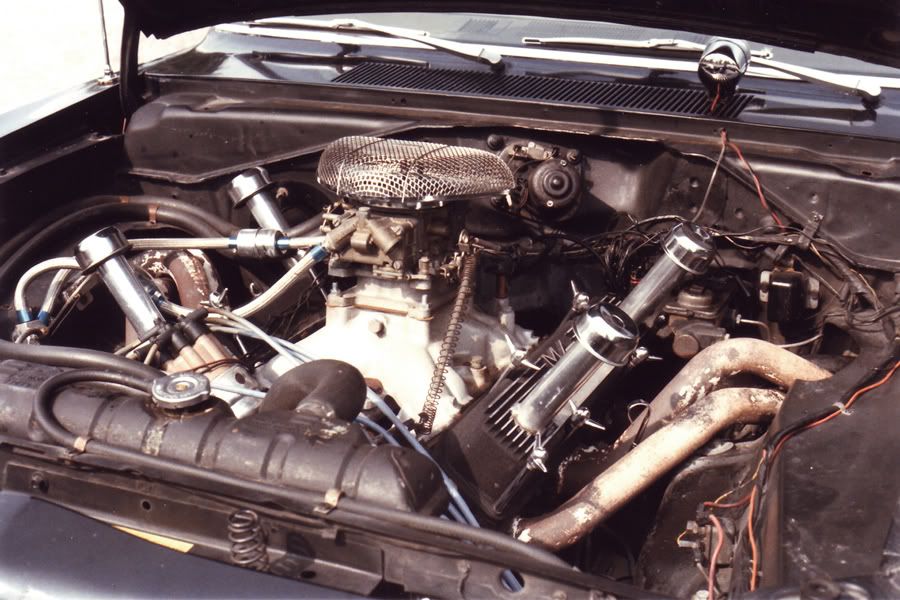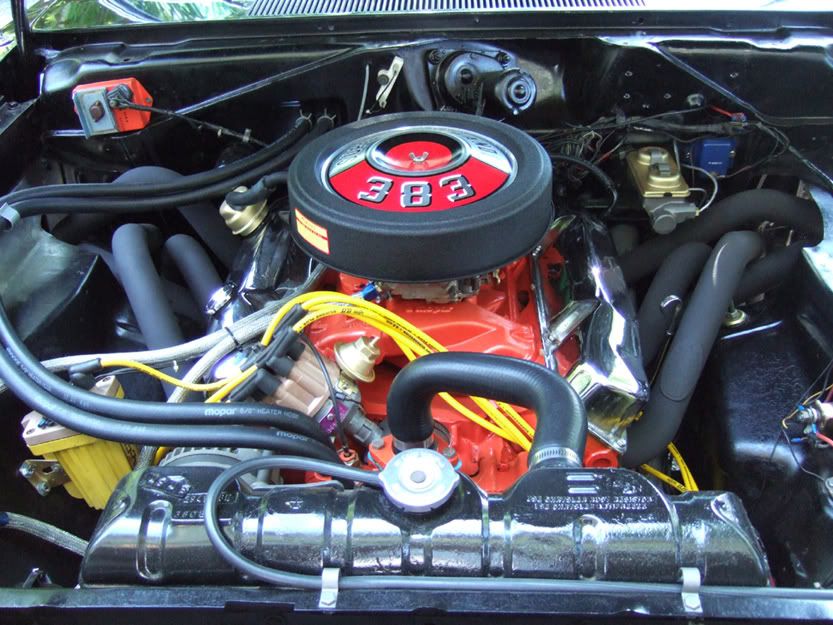The PCV system is pretty simple and so long as it is in good working order, very effective. One valve cover has a breather (right bank typically) which allows filtered air into the crankcase. The opposite valve cover has a PCV valve which sucks oil, moisture and exhaust vapors from the crankcase and meter them into the intake manifold so they get burned through the combustion process. The PCV valve acts like a "vacuum leak regulator" or check valve allowing a small amount of crankcase vapor to be sucked in at idle and a large amount at cruise. If you didn't have a PCV valve, you would have a large amount of air entering the intake, causing poor idle quality.
This system has some real advantages:
1. Toxic (and smelly) crankcase vapors are burned by the engine and not vented into the atmosphere directly upwind of the driver. The crankcase is effectively "sealed" keeping dirt and crud out making the engine last longer. The baffle under the PCV valve acts as an air/oil separator (on factory valve covers anyway), which keeps you oil in the engine where it belongs.
2. Moisture, a natural byproduct of combustion is pulled from the crankcase as the engine runs. If the moisture remains in the crankcase, the oil will become acidic and corrosive to soft metals like bearings. This is another way a PCV valve will make your engine last longer.
3. The crankcase runs at a slight negative pressure with a PCV system. Small leaks will try to let air in and not allow oil out. If the crankcase develops positive pressure, the engine will try to force oil out at every possible location.
4. The system has NO drawbacks performance wise and uses no horsepower to operate. If the system were removed you might have to go to a smaller main jet in your carb to get acceptable idle performance which could actually hurt power output. A normal PCV system, being vacuum operated, allows less vapor into the engine at wide open throttle, so it has no effect when you are running down the track.
Now, if you were to remove this system for some reason, you would have to overcome some obstacles. As the engine runs at high RPM the crankshaft whips up a cloud of oil vapor which has to go somewhere. So you add "puke tanks" to try to keep this cloud from oiling down your engine compartment and creating a stinky fire hazard. Even if you catch all the oil you'll still be venting toxic fumes directly upwind of your face. Another option is to use one of the "exhaust scavenge" systems where you plumb the crankcase directly into the header collectors with a couple of aspirators and check valves. In this system the high velocity exhaust creates suction through the aspirators (a venturi effect) drawing vapors from the crankcase and blowing them out the exhaust. The higher the RPM, the more suction. This type of system is effective only at high RPM in an exhaust system with no back pressure (like open headers). OK for NASCAR or a dragster, but not effective on the street.
If you have excessive "blow-by" at idle which the PCV system cannot handle, you have a mechanical issue that no amount of external plumbing will correct. Think about it, if you are dumping that much compression at idle where cylinder pressure is low, imagine how much you are losing at full power. Every bit of combustion energy that leaks past the rings is energy that is not being used to move the car forward (although you are still paying $4.29 a gallon to make this energy).
PCV systems have been around for a LONG time (1941 Willys Jeep is possibly the first) and have not changed much even on new engines. Because they work better than anything else and make engines last longer.





















